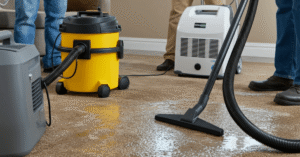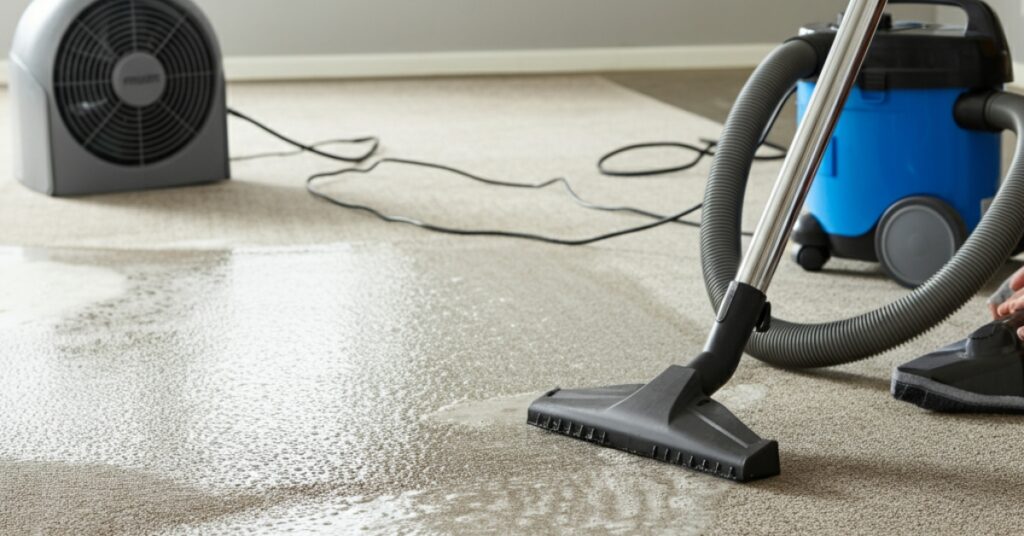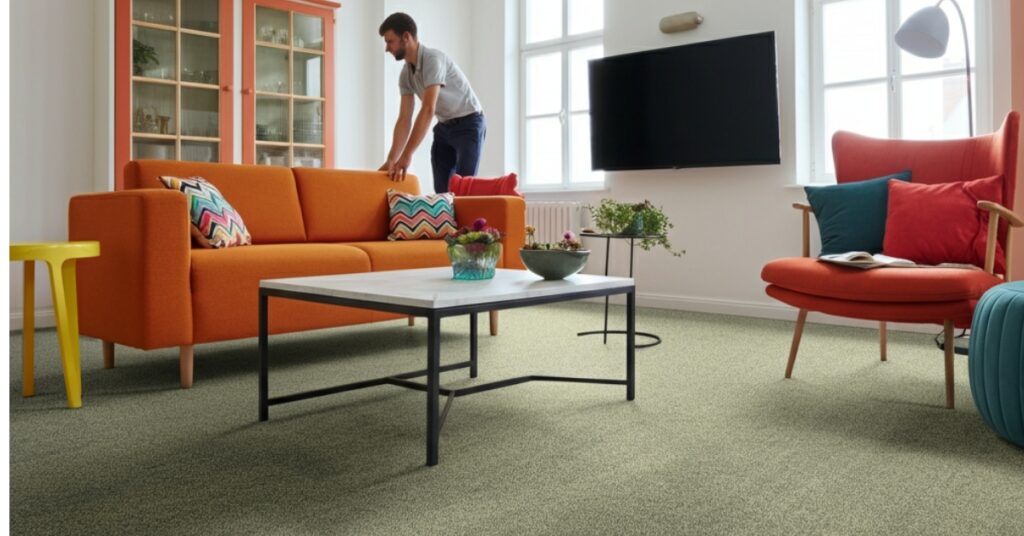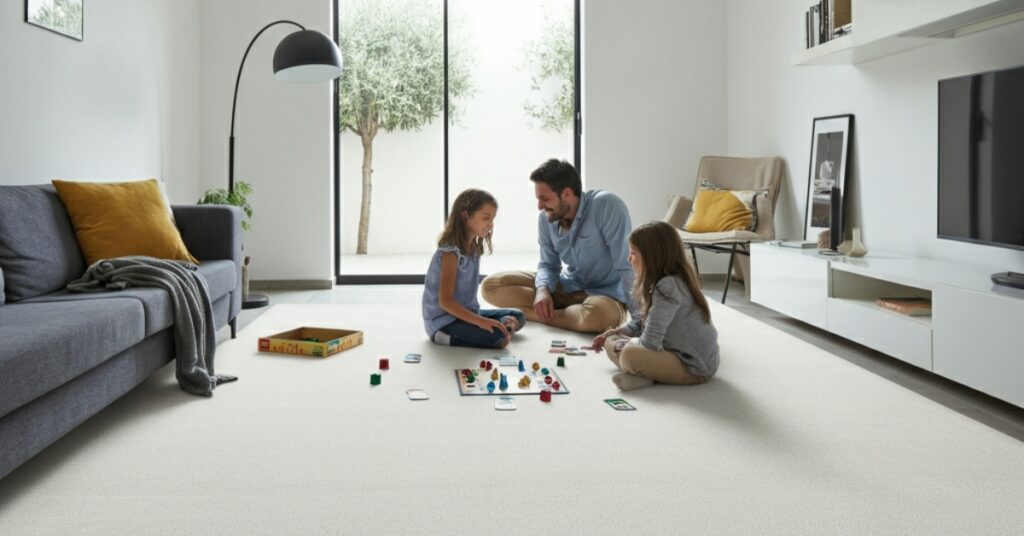As an Amazon Associate, I earn from qualifying purchases.
Mold on your boat carpet creates health risks and damages your investment. Therefore, removing mold quickly prevents it from spreading and causing permanent damage to your vessel’s interior. Clean boat carpet mold requires immediate action because marine environments provide perfect conditions for mold growth. Moreover, moisture, humidity, and organic materials in carpet fibers create an ideal breeding ground.
Furthermore, neglecting mold removal leads to respiratory issues, allergic reactions, and costly carpet replacement. This guide covers effective methods to eliminate mold from boat carpets using safe, proven techniques. Additionally, you’ll learn prevention strategies to keep your marine carpet mold-free throughout boating season.
Understanding Mold Growth in Marine Carpets
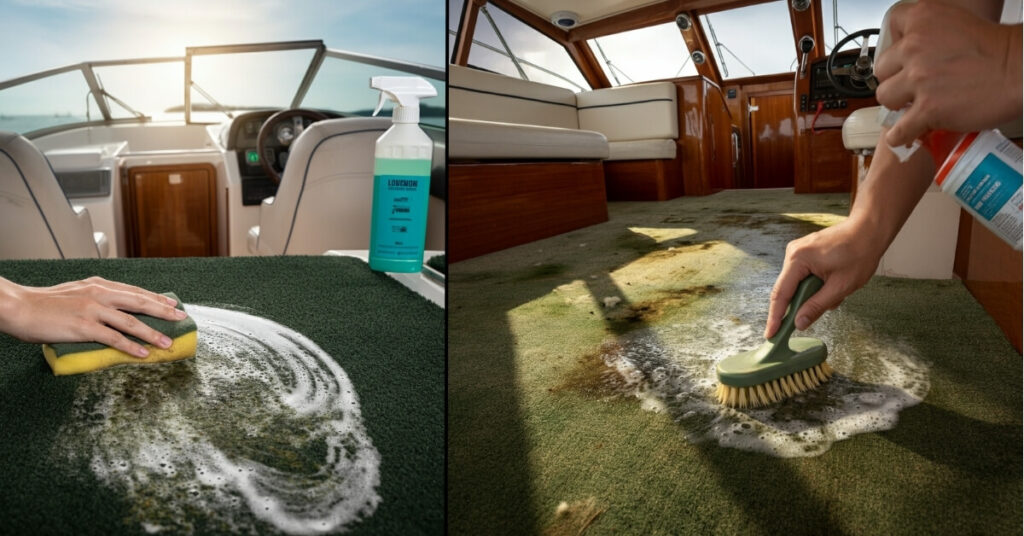
Boat carpets face unique challenges that household carpets don’t encounter. Specifically, constant moisture exposure, temperature fluctuations, and limited ventilation accelerate mold development. Consequently, even small amounts of trapped water can trigger widespread mold growth within 24-48 hours.
Marine mold appears in various colors including black, green, white, or orange patches. Furthermore, musty odors often accompany visible mold growth. Additionally, mold releases spores that circulate through your boat’s air system, potentially affecting everyone aboard.
Common Causes of Boat Carpet Mold
Several factors contribute to mold formation in marine environments. First, rainwater entering through hatches or windows saturates carpet fibers. Second, condensation from temperature changes creates persistent dampness. Third, spilled drinks or wet gear introduce additional moisture sources.
Poor ventilation compounds these problems by preventing proper air circulation. Similarly, storing wet items on carpet creates localized moisture pockets. Finally, inadequate cleaning allows organic matter to accumulate, providing nutrients for mold colonies.
Essential Safety Precautions Before Cleaning
Safety comes first when dealing with mold removal projects. Initially, wear protective equipment including N95 masks, rubber gloves, and eye protection. Also, ensure adequate ventilation by opening all hatches and running fans if available. Never mix different cleaning chemicals, as this can create dangerous fumes. Instead, use one product at a time and allow complete ventilation between applications. Additionally, remove children and pets from the area during cleaning procedures.
Gathering Necessary Cleaning Supplies
Effective mold removal requires specific tools and materials. Primarily, you’ll need white vinegar, baking soda, hydrogen peroxide, and commercial mold removers. Furthermore, gather stiff brushes, microfiber cloths, spray bottles, and a wet/dry vacuum.
Additionally, prepare plastic sheeting to protect surrounding areas. Also, have plenty of clean water available for rinsing solutions. Finally, ensure you have adequate lighting to identify all affected areas thoroughly.
Immediate Assessment and Preparation
Begin by thoroughly inspecting your boat carpet for mold contamination. Carefully examine areas around windows, hatches, and any water entry points. Also, check underneath removable carpet sections where moisture often accumulates unnoticed. Document the extent of mold growth with photographs for insurance purposes if necessary. Meanwhile, remove all furniture and items from affected areas. Subsequently, this provides complete access to contaminated carpet sections.
Removing Loose Debris and Surface Contamination
Start cleaning by vacuuming loose debris and surface mold spores using a HEPA-filtered vacuum. However, avoid regular vacuums as they can spread spores throughout your boat. Next, dispose of vacuum bags immediately in sealed plastic containers.
Gently brush away visible mold growth using a stiff brush. Meanwhile, work from outside the contaminated area toward the center to prevent spreading. Subsequently, collect loosened mold material with damp cloths and dispose of them properly.
Natural Cleaning Methods to Clean Boat Carpet Mold
White vinegar offers an effective, non-toxic solution for clean boat carpet mold situations. Specifically, undiluted vinegar kills approximately 82% of mold species naturally. Furthermore, vinegar’s acidic properties prevent future mold growth when applied properly. Create a cleaning solution using equal parts white vinegar and water in spray bottles. Then, saturate affected carpet areas thoroughly and allow the solution to penetrate for 30 minutes. Afterward, scrub gently with a stiff brush to break up mold colonies.
Baking Soda Treatment for Deep Cleaning
Baking soda absorbs moisture while neutralizing mold odors effectively. First, sprinkle generous amounts of baking soda over damp carpet areas. Next, work the powder into carpet fibers using a stiff brush or broom.
Allow baking soda to remain on carpet for several hours or overnight if possible. Finally, vacuum thoroughly to remove all residue. Additionally, this method helps eliminate musty odors that persist after initial cleaning.
Hydrogen Peroxide Application Techniques
Hydrogen peroxide provides powerful antifungal properties for stubborn mold infestations. However, test on an inconspicuous area first to check for color fading. Then, apply 3% hydrogen peroxide directly to affected areas using spray bottles.
Allow the solution to foam and work for 10-15 minutes before scrubbing. Afterward, rinse thoroughly with clean water to remove all chemical residues. Moreover, hydrogen peroxide continues working even after application, providing lasting protection.
Commercial Mold Removal Products
Professional mold removers offer stronger formulations for severe contamination cases. Specifically, products containing quaternary ammonium compounds effectively eliminate mold while preventing regrowth. Furthermore, marine-specific cleaners are formulated for boat environments.
Always read product labels carefully and follow manufacturer instructions exactly. Additionally, ensure adequate ventilation when using chemical products. Also, test products on small, hidden areas before applying to visible carpet sections.
Application and Contact Time Requirements
Most commercial products require specific contact times to achieve maximum effectiveness. Typically, allow cleaners to remain on surfaces for 10-30 minutes depending on product specifications. Meanwhile, avoid walking on treated areas during this period. Some products require scrubbing while others work through chemical action alone. Therefore, follow label directions precisely for best results. Subsequently, rinse thoroughly according to manufacturer recommendations to remove all chemical residues.
Deep Cleaning and Extraction Procedures
After initial mold treatment, deep cleaning removes remaining spores and cleaning residues. First, rinse treated areas thoroughly with clean water. Then, extract as much moisture as possible using wet/dry vacuums or carpet extractors. Work systematically across the entire carpet surface, overlapping passes to ensure complete coverage. Additionally, change vacuum filters frequently during this process. Finally, allow carpets to dry completely before replacing furniture or equipment.
Professional Steam Cleaning Considerations
Steam cleaning provides deep penetration and sanitization for heavily contaminated carpets. However, ensure your boat’s electrical system can handle high-powered equipment. Also, professional marine carpet cleaners have specialized equipment designed for boat environments.
Steam temperatures above 160°F kill mold spores effectively while loosening embedded debris. Furthermore, immediate extraction prevents moisture from remaining in carpet padding. Nevertheless, professional services may be necessary for extensive mold problems.
Drying and Ventilation Strategies
Proper drying is crucial for preventing mold recurrence after cleaning. Initially, remove as much moisture as possible through mechanical extraction. Then, increase air circulation using fans, dehumidifiers, and open hatches. Position fans to create cross-ventilation patterns that move air across carpet surfaces. Additionally, dehumidifiers help maintain optimal humidity levels below 60%. Furthermore, continue ventilation for at least 24-48 hours or until carpets are completely dry.
Monitoring Moisture Levels During Drying
Use moisture meters to monitor drying progress objectively. Specifically, carpet moisture levels should reach normal ranges before considering the job complete. Also, check surrounding areas for hidden moisture that could cause future problems. Document moisture readings throughout the drying process. Meanwhile, adjust ventilation strategies if drying proceeds too slowly. Subsequently, this prevents incomplete drying that allows mold to return quickly.
Prevention Strategies for Future Protection
Preventing mold growth is easier than removing established infestations. Primarily, maintain proper ventilation throughout your boat to reduce humidity levels. Also, address water leaks immediately before they saturate carpet materials. Install moisture-absorbing products in closed compartments and storage areas. Furthermore, consider upgrading to marine-grade carpets with antimicrobial treatments. Additionally, regular cleaning prevents organic matter accumulation that feeds mold growth.
Regular Maintenance and Inspection Schedules
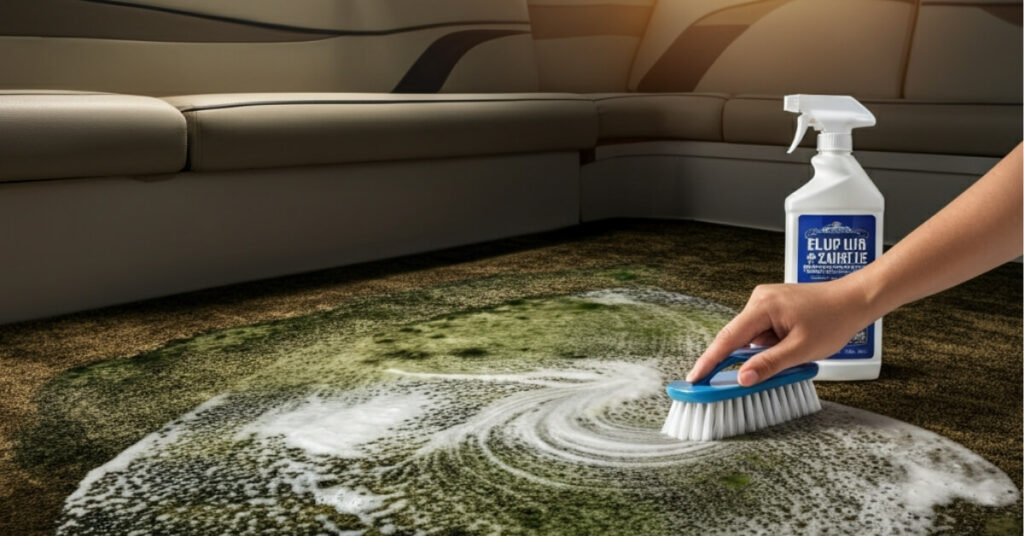
Establish weekly inspection routines during boating season to catch problems early. Specifically, check areas prone to moisture accumulation including around windows, hatches, and plumbing connections. Also, maintain cleaning schedules that prevent dirt and debris buildup. Monthly deep cleaning helps maintain carpet condition and prevents mold establishment. Moreover, seasonal treatments with antimicrobial products provide additional protection. Finally, document maintenance activities to track carpet condition over time.
When to Consider Professional Help
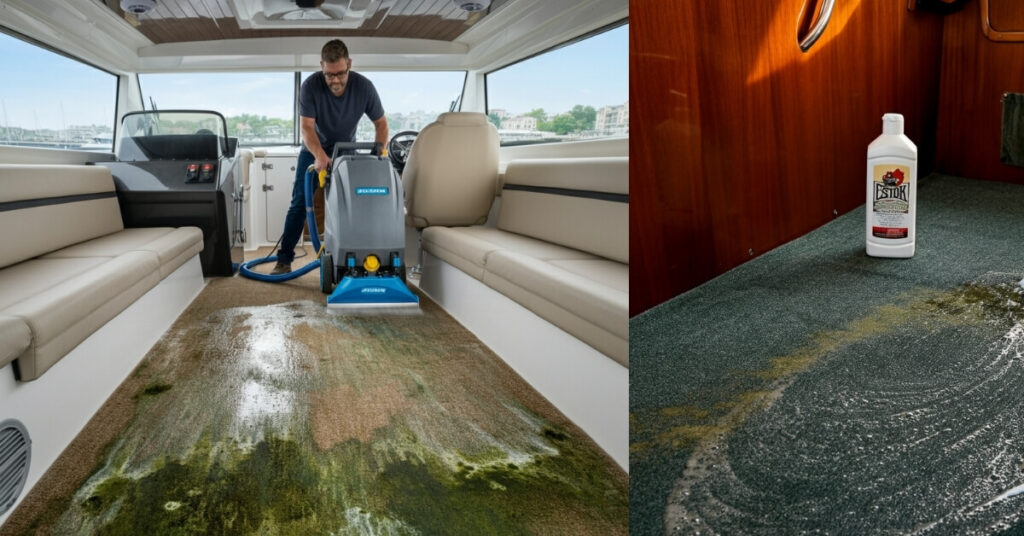
Some mold situations exceed typical DIY capabilities and require professional intervention. Specifically, widespread contamination covering large carpet areas needs specialized equipment and expertise. Furthermore, recurring mold problems despite proper cleaning indicate underlying moisture issues.
Health considerations also influence professional service decisions. Additionally, people with compromised immune systems or severe allergies should avoid mold exposure entirely. Also, valuable boats may benefit from professional assessment to prevent damage from improper cleaning techniques.
Frequently Asked Questions
1. Can I clean boat carpet mold with bleach?
No, avoid using bleach on boat carpets. Bleach can discolor carpet fibers and create toxic fumes in enclosed boat spaces. Instead, use vinegar, hydrogen peroxide, or commercial marine mold removers.
2. How long does it take to remove mold from boat carpet completely?
Complete mold removal typically takes 2-4 days including cleaning, drying, and verification. However, extensive contamination may require longer treatment periods and professional assistance.
3. Will mold return after cleaning if I don’t fix moisture problems?
Yes, mold will return quickly without addressing underlying moisture sources. Fix leaks, improve ventilation, and control humidity to prevent future mold growth.
4. Is it safe to sleep on a boat with moldy carpet?
No, moldy environments can cause respiratory problems and allergic reactions. Clean all mold thoroughly and ensure complete drying before occupying the boat.
5. Can I prevent boat carpet mold naturally?
Yes, maintain proper ventilation, control humidity below 60%, and clean spills immediately. Regular cleaning with vinegar solutions also helps prevent mold establishment.
6. What temperature kills mold spores in carpet?
Temperatures above 160°F effectively kill mold spores. Steam cleaning achieves these temperatures while providing deep penetration into carpet fibers.
7. Should I replace carpet padding after mold contamination?
Yes, carpet padding often retains moisture and mold spores despite surface cleaning. Replace contaminated padding to prevent recurring mold problems.
8. How do I know if mold cleaning was successful?
Successful cleaning eliminates visible mold, musty odors, and moisture problems. Use moisture meters to verify complete drying and monitor for several weeks afterward.
Maintaining a Healthy Marine Environment
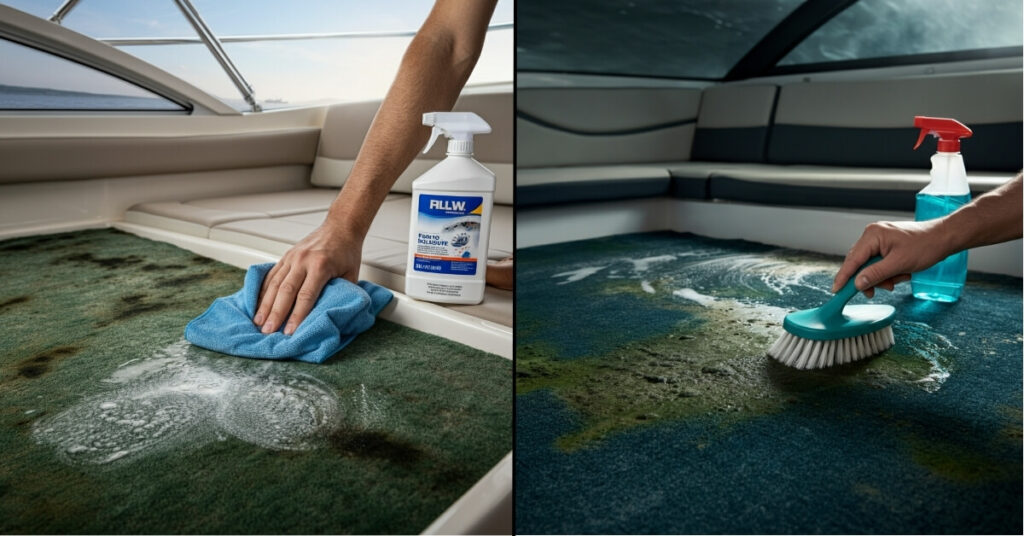
Successfully removing mold from boat carpets requires systematic approach and proper techniques. Clean boat carpet mold immediately prevents health risks and protects your marine investment. Furthermore, combining effective cleaning methods with prevention strategies ensures long-term success.
Regular maintenance, proper ventilation, and prompt moisture control create environments where mold cannot thrive. Additionally, early detection and quick response prevent minor problems from becoming major contamination issues. Finally, don’t hesitate to seek professional help for extensive mold problems that exceed DIY capabilities.
As an Amazon Associate, I earn from qualifying purchases.

